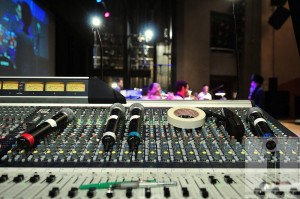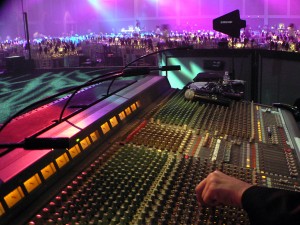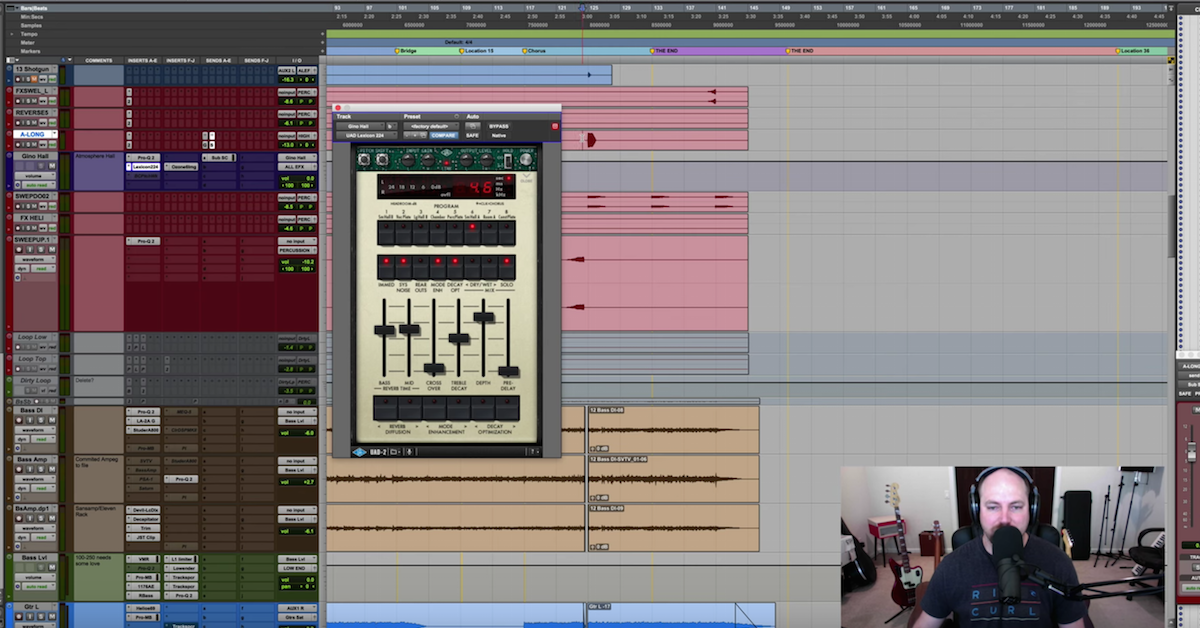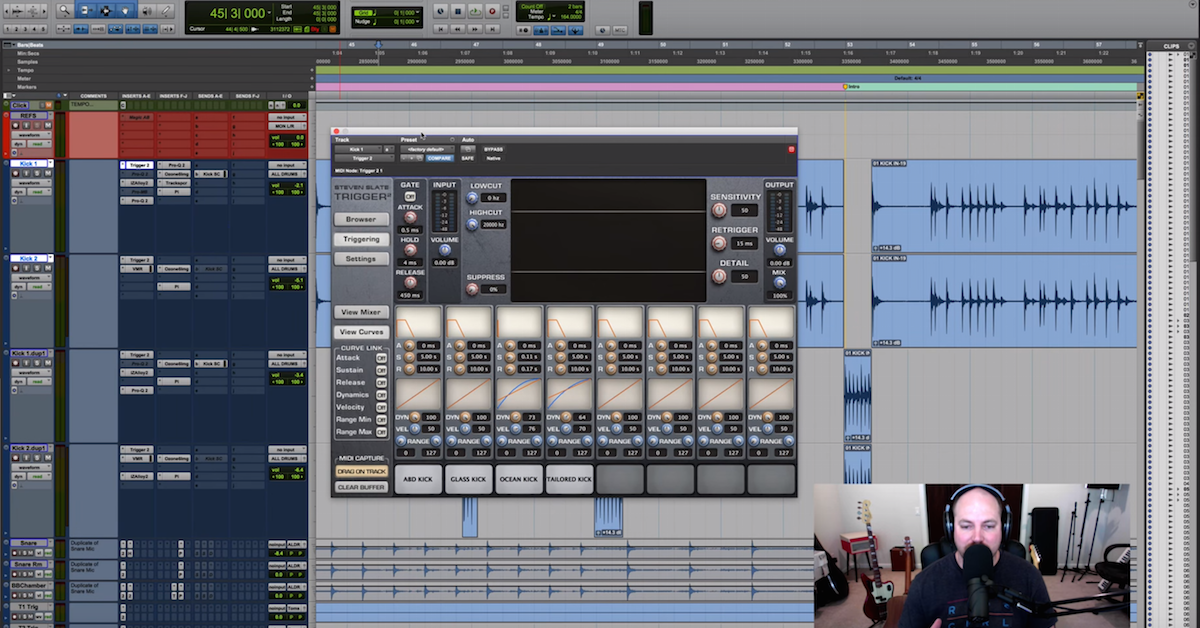A Live Soundman’s Handbook for Small Venues
Article Content
Reading through magazines like Mix or EQ, one would get the impression that all sound-men work in large arenas for world famous artists.
The reality is that thousands of small venues are spread out over the United States. Dozens exist in each city. Though it’s always fun to read what insane new rig the front of house and monitor engineers are running, the reality of working in those large venues is quite different than working in a locally owned venue or bar.
If you find yourself running sound in one of these smaller venues, you’ll have to tailor your skills and expectations to your environment to be successful. I spent three years in working in two of Pittsburgh PA’s better known smaller venues. Below are some of my experiences and advice for some of you who may be starting out running live sound. I’m going to assume that you’ll be running front of house (FOH) as well as monitor mixes alone, as is common in most smaller places.
What Gear do I need?
The size and types of performers coming through will dictate what gear you need. An eight or sixteen channel mixer, drum mics, or an external effects unit may not be necessary depending on your needs. A few things however I would classify as essential: you’ll no doubt have several vocal mics, but having enough mic stands for those mics can sometimes be an issue. Some singers like straight stands, some singers like boom mic stands. Boom mic stands don’t last forever,  especially when used by bands. After a few months you may find your mic stand reserve running low, and before you know it you don’t have enough mic stands for the group that does four-part vocal harmonies. I’ve never seen a vocal mic break, but mic stands are worth their weight gold when you have a finicky singer who only likes boom stands. Have more mic cables than you need as well. Sometimes a cable will still pass audio when connected to a dynamic microphone, but if you have a condenser mic or DI box that requires phantom power, it may not work. Having and using a cable tester every few weeks will prevent many stressful nights trying to figure out why you’re getting no sound.
especially when used by bands. After a few months you may find your mic stand reserve running low, and before you know it you don’t have enough mic stands for the group that does four-part vocal harmonies. I’ve never seen a vocal mic break, but mic stands are worth their weight gold when you have a finicky singer who only likes boom stands. Have more mic cables than you need as well. Sometimes a cable will still pass audio when connected to a dynamic microphone, but if you have a condenser mic or DI box that requires phantom power, it may not work. Having and using a cable tester every few weeks will prevent many stressful nights trying to figure out why you’re getting no sound.
The Night of the Show
So, it’s the night of the show: do yourself a favor and show up on time, if not a few minutes early. Chances are the bands won’t be there yet. They’ll probably still be back at the practice space loading up their drums (but forgetting drum hardware) and amps (but forgetting guitar cables). Still, you’ll be much better off to get a few minutes to get situated and make sure everything is where it needs to be. Often times, venues have a person to run sound when there are bands, but that doesn’t mean there aren’t other events at the venue. DJ’s, comics, and other performers may be using the equipment when you’re not there. Check that nothing’s missing and nothing’s broken. You know you’ll most likely need at least one vocal mic and, if there’s a full band, drum mics. Get those out and situated around the stage in a way that still allows the bands to come in and set up. Get all your cables and mic stands ready as well. Make sure the mic clips are screwed onto the stand as well.
During one performance, a solo acoustic singer/songwriter’s mic completely came off the mic stand. Being a decent performer, she continued to vamp on an instrumental-only section of her song while I darted to the front of the stage to put the mic back in position. If you have the time and haven’t done so in a while, check the cables with a cable tester.
Ring The Room
Before the band gets to the venue, or perhaps while they’re setting up, ring out your room. This basically involves setting a mic on stage and increasing it’s gain until you start to hear feedback. Try to isolate the frequency of the feedback and attenuate it on the main output. This will allow you to squeeze every last drop of level from the mic and let the girl who sings with a whisper fronting the heavy metal cover band. Trust me, you’ll get a lot of sideways glances and glares from the band and the audience when the vocals can’t be heard. And if, God forbid, you induce a bit of feedback trying to make the vocals audible, you can fully expect as many faces as are present to turn around and look at you while holding their ears. They don’t know what you’re working with, and don’t expect them to. That’s their little brother or girlfriend on stage, and anything that goes wrong is your fault.
One year the club I was working for hosted one of those international battle of the bands that spans several weeks. In an attempt to save money in having to pay me for extra hours, the club owner set up the back line and equipment before I arrived. At the time, I thought it was nice to walk into the place and just run the faders for each act. When the first band started performing, I noticed the rhythm guitar sounded a bit low and lacked definition. I tried a bit of EQ and turning the volume up, but I could hear feedback creeping into the mix, so I didn’t push it. It wasn’t a problem, but didn’t leave much room to for me to adjust settings if the band got louder. In the middle of the set, a guy walked up to me and asked if I could turn up the guitar. I told him that it was as loud as it could go. I think he interpreted that as me saying that that was as loud as I wanted it, rather than me explaining that it actually wasn’t possible to make it louder. About a minute later he asked me which fader was for the guitar. Not thinking anything of it, I pointed to the channel with “Rh Gtr” written on it. Confident the mix was stable for the next song, I stepped away to the bar about ten feet away to get a drink of water. When I turned around, I saw that guy adjusting all the faders! I approached him and told him not to touch the equipment or adjust the levels. With a smug grin, he said “I don’t need to anymore, I just did.” At this point the bartender came over and told him he had to leave. He agreed he would leave, but not before imparting one last smug insult by half asking, half stating, “Is this the first time you’ve ever done this?” People WILL do this. They will come up to you and tell you how THEY think it should sound. On any given song, one person will tell you they want more bass, while another will think the mix sounds muddy. One person will beg for more volume while others will cry that their ears are bleeding. You will not please everyone. You must assume that no complaints equals a job well done.
leave much room to for me to adjust settings if the band got louder. In the middle of the set, a guy walked up to me and asked if I could turn up the guitar. I told him that it was as loud as it could go. I think he interpreted that as me saying that that was as loud as I wanted it, rather than me explaining that it actually wasn’t possible to make it louder. About a minute later he asked me which fader was for the guitar. Not thinking anything of it, I pointed to the channel with “Rh Gtr” written on it. Confident the mix was stable for the next song, I stepped away to the bar about ten feet away to get a drink of water. When I turned around, I saw that guy adjusting all the faders! I approached him and told him not to touch the equipment or adjust the levels. With a smug grin, he said “I don’t need to anymore, I just did.” At this point the bartender came over and told him he had to leave. He agreed he would leave, but not before imparting one last smug insult by half asking, half stating, “Is this the first time you’ve ever done this?” People WILL do this. They will come up to you and tell you how THEY think it should sound. On any given song, one person will tell you they want more bass, while another will think the mix sounds muddy. One person will beg for more volume while others will cry that their ears are bleeding. You will not please everyone. You must assume that no complaints equals a job well done.
The Right Equipment
It’s also possible that you may have stepped into the job after the previous sound guy (who may have been the bartender, bar owner, or bouncer) set everything up and decided on what gear you need. You might find that you only have eight channels of inputs on your board and need every last one of them every night to do justice to the bands on stage. All that being said, you will need a talk back mic. Too many times has something gone wrong in the middle of a band’s set and I’ve had to elbow and push my way through the crowd to communicate something to the band or to make some adjustment. Don’t have an extra XLR input to spare? Try this: get an XLR female to TS (1/4”) male converter. Many boards will have a line-in channel that doesn’t have an XLR input. You might use that input for an iPod or something, but the tape input will work just as well for that. Plug the mic (with the converter) into the line input and crank it. However, you won’t send any to the main output, only to the monitors. Feedback will be unlikely as the monitors will be on stage several meters away from you and pointed towards the band.
One Last Piece of Advice
There are other more technical tips I could recommend, but I’ll leave that to another post. I’ll close with this piece of advice: make sure you and the bar owner, or whoever your boss is, are on the same page. His goal is to maximize profit and spend as little as possible. Your job is to get the best sound you can from the room you’re in. Often times these goals may be at odds. Recommending new gear every so often should be appreciated. Letting the owner know how much better things will sound and how his patrons will be happier is a better way of expressing the fact that the sound system he bought from Guitar Center sucks. However, definitely speak up when deficiencies in the equipment are making your job impossible. Mics, mic stands, mic cables, and a working PA are necessities. I’ve seen my fair share of monitors held together with duct tape that fail every other day. When they do, and the band can’t hear themselves, explaining that the owner is a cheapskate won’t do anything for your reputation. Lastly, make sure there is an understanding on how you’re to be paid. Toward the end of my tenure at one venue, the owner started to calculate how many minutes I had worked and paid me my hourly wage (which hadn’t been adjust in two years) to the penny. That was a good sign it was time to leave. The next club I worked in paid me on a sliding scale depending on the amount made at the door. The more people that came in, the more I got paid. But there was an agreed upon minimum that I would make that I was comfortable with.
Running live sound is a great way to meet new bands, network, and work on your engineering chops. But it’s not a make or break situation. If you feel you’re not getting anything out of the job or the job is killing you, move on! Let yourself be the only judge of your worth and abilities. Good luck!






